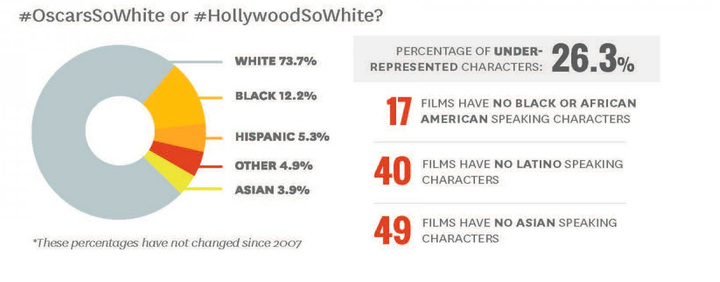Hollywood’s 2015 diversity report card is in and the results are a disappointing case of déjà vu.
In the latest study by the Media, Diversity & Social Change (MDSC) Initiative at University of Southern California’s Annenberg School for Communication and Journalism, researchers found little improvement in 2015 films when it came to the representation of women, people of color and LGBT characters.
In the top 100 films of 2015, the report found only 31.4 percent of all speaking characters were female (a figure that hasn’t changed since 2007), only 12.2 were black, 5.3 percent were Latino and 3.9 percent were Asian.
In fact, out of the 100 films analyzed, 40 films had no Latino speaking characters and 49 had no Asian speaking characters.

The study also found that less than 1 percent of speaking characters identified as LGBT and, for the first time, assessed characters with disabilities, who made up just 2.4 percent of all speaking roles.
“The findings reveal that Hollywood is an epicenter of cultural inequality,” Dr. Stacy L. Smith, founding director of the MDSC Initiative, wrote in the study which was released Tuesday. “While the voices calling for change have escalated in number and volume, there is little evidence that this has transformed the movies that we see and the people hired to create them. Our reports demonstrate that the problems are pervasive and systemic.”
Despite online advocacy like #OscarsSoWhite and efforts made by The Academy of Motion Picture Arts and Sciences to increase diversity among its members, separate studies have shown that issues of representation and inequality in Hollywood start at the top, with predominantly male and white studio executives.
And, as the USC study points out, diversity behind the camera would likewise translate to more inclusive casting on-screen. As far as quick solutions to inequality in Hollywood, Dr. Smith found gender equality on-screen can easily be reached by 2018 if five female characters are added to scripts per year.
Read the full report here.

